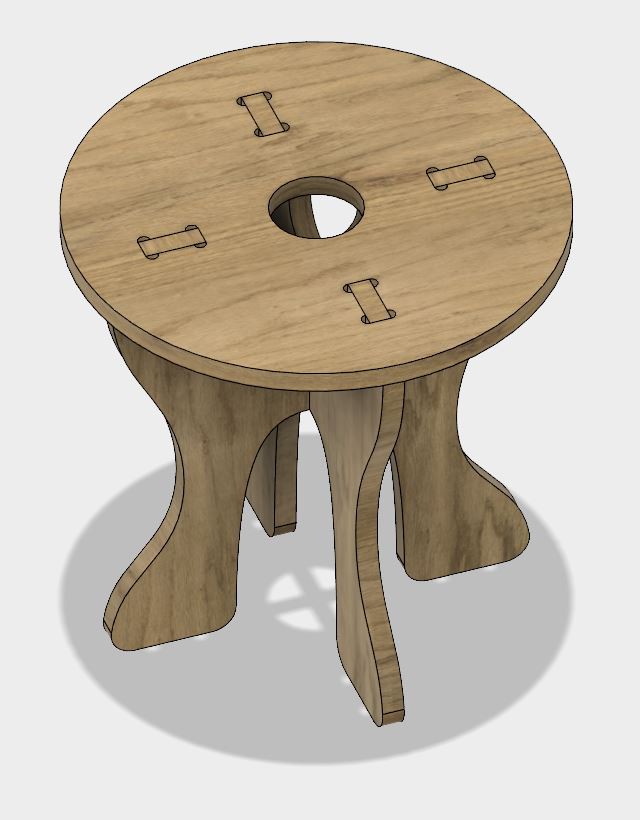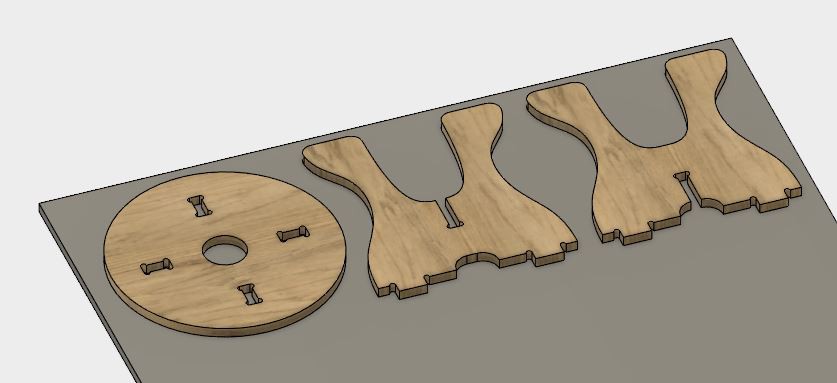The first iteration of the project was simply a CAD exercise to practice thinking for CNC routing.
Z-Axis: Individual parts are constrained to the thickness of the sheet of plywood, so there's a hard upper bound on the Z axis. Most CNC routers have some Z-axis control to make partial cuts in the wood, so it is possible to have varying heights. For CNC-routed furniture, this is usually employed to cut slots for other pieces to fit without the slot being visible on the other side.
Edges: The cut edges are, for the most part, vertical. While it is possible to buy router bits of specific profiles, the cost can quickly spiral out of control. Best to stick with simple cuts while starting out.
Interior corners: 3D routers are constrained by the cutting tool radius and can't cut a sharp interior corner. The most common workaround for this issue is to cut a dog-bone shape with the corners rounded out so it is possible to cut.
Here is the first sketch, completely lacking any design excitement, purely for the purpose of shifting thinking from 3D printing to CNC routing.

And here are the pieces laid out for CNC routing.
Since this is just a practice exercise, the decision was made to stop here. This boring (but educational) CAD file was set aside and never made the transition to the physical world.
 Roger
Roger
Discussions
Become a Hackaday.io Member
Create an account to leave a comment. Already have an account? Log In.